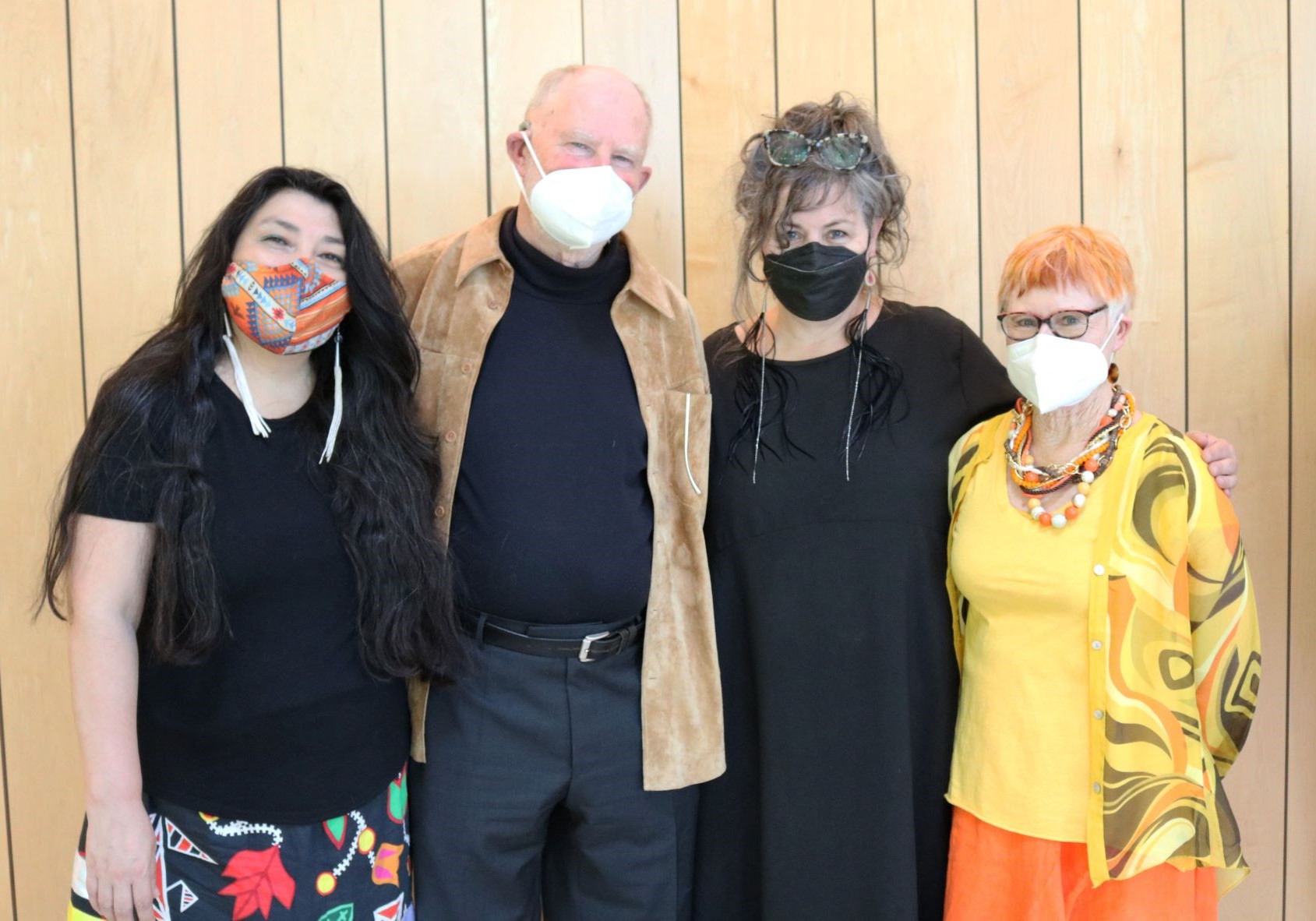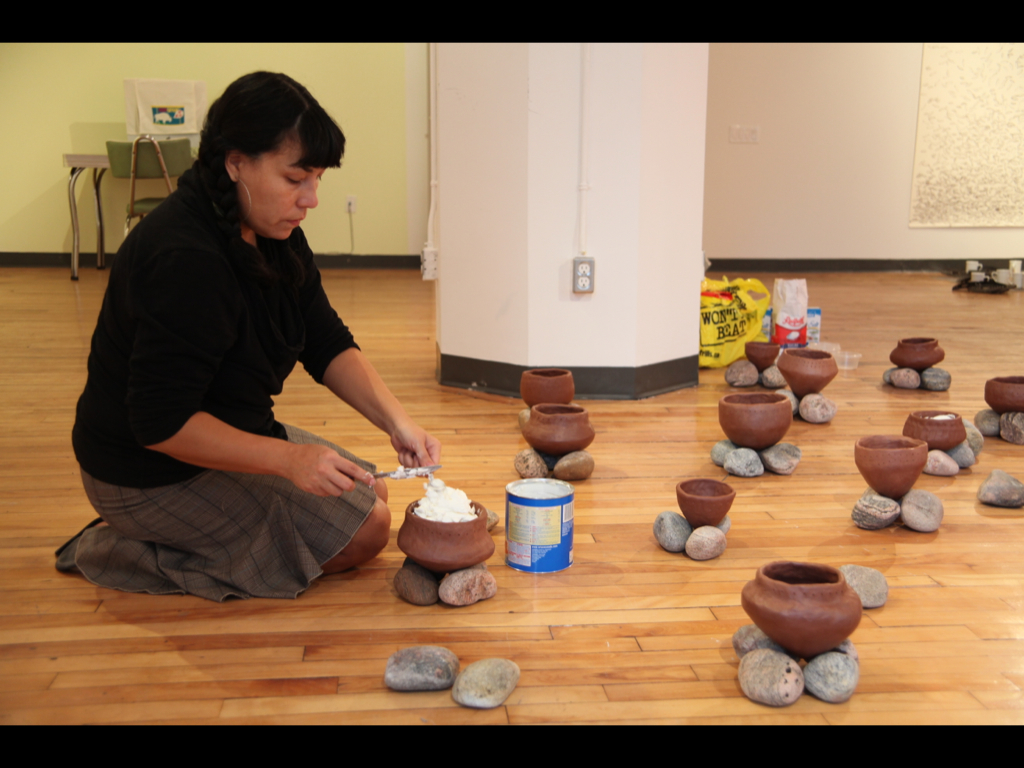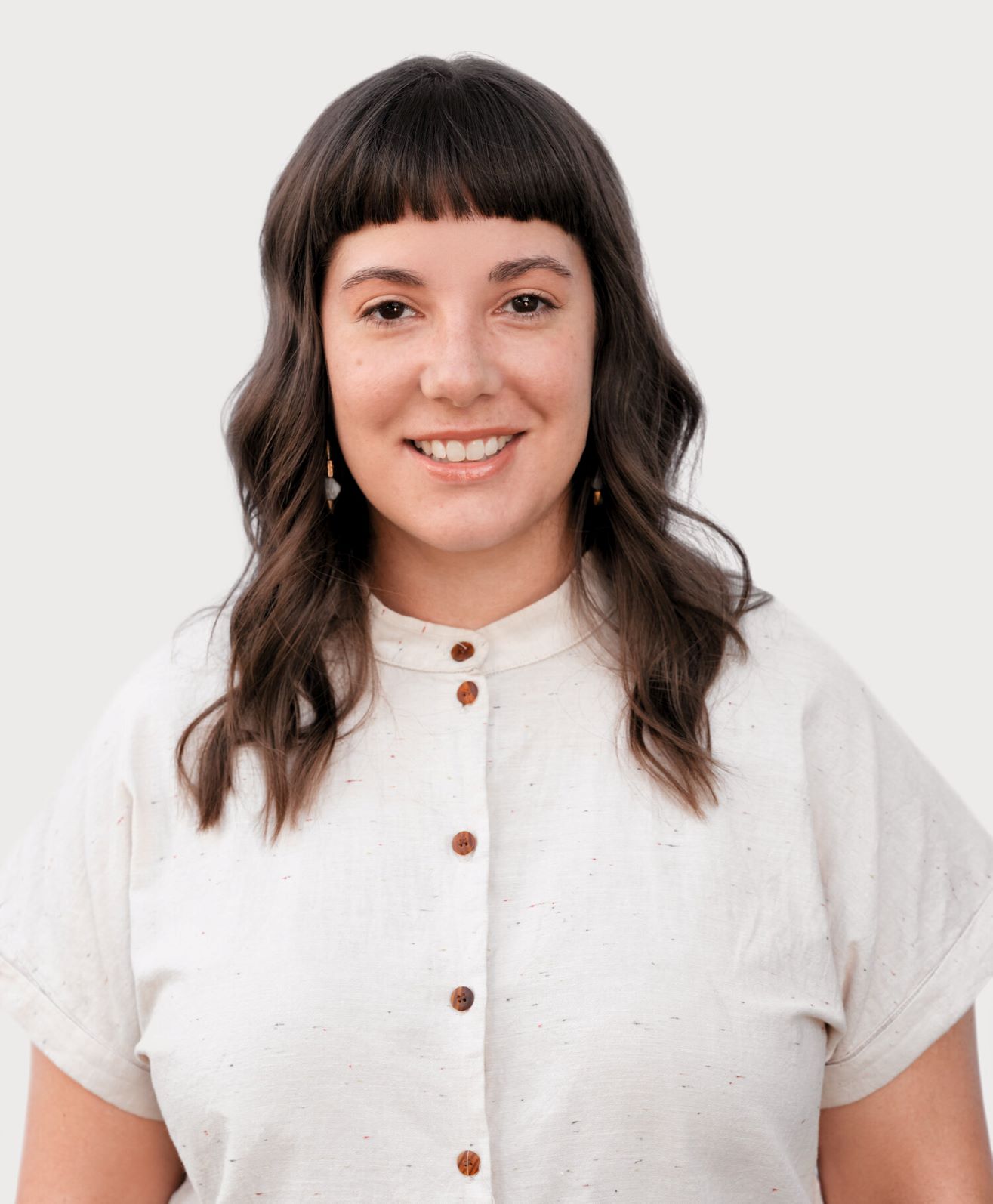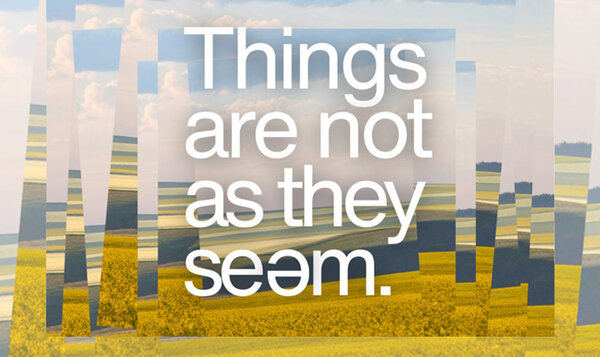
USask awards inaugural ohpinamake Indigenous art prize
Winnipeg-based artist KC Adams will receive $10,000 and six other artists will receive $1,000
By Shannon Boklaschuk
The University of Saskatchewan (USask) Art Galleries and Collection has announced KC Adams as the inaugural recipient of ohpinamake, a new prize for Indigenous artists made possible thanks to the generosity of donors Jim and Marian Knock.
Adams, an Anishinaabe, Inninew, and British artist living in Winnipeg, was selected by a jury of cultural workers and community members to receive the first $10,000 ophinamake award.
“What an incredible honour,” said Adams, an educator, activist, mentor, and community member whose work explores technology and its relationship to Indigenous identity and knowledge systems. “I was surprised and very happy that I was chosen.”

Adams said she often refers to herself “a social practice artist,” noting community and mentorship are important aspects of her work. As she builds her artistic career, she is showing Indigenous students “that this is possible for their future,” she said.
“That modelling is really important to me, and then going into classrooms and teaching kids about their Indigenous history from an Indigenous perspective is really important.”
The word ohpinamake is a nêhiyawêwin (Cree) term meaning “to lift others.” The name was gifted to the USask Art Galleries and Collection by a group of three Indigenous community leaders: Elders Maria Campbell and Louise Bernice Halfe – Sky Dancer, and artist and USask graduate Ruth Cuthand (BFA’83, MFA’92).
The prize is open to Indigenous artists whose territories intersect with the current colonial borders of Canada. Jim and Marian Knock, who are originally from Saskatchewan and currently reside in Victoria, B.C., donated $60,000 to USask to support the award for a five-year period.
“Throughout this process we have endeavoured to remove the systemic barriers that keep Indigenous artists and others from accessing opportunities like this,” said Prof. jake moore, director of the USask Art Galleries and Collection and a faculty member in the Department of Art and Art History in USask’s College of Arts and Science.
“We will continue to develop both the processes of application, adjudication, and the possible outcomes of ohpinamake over these next five years,” moore said.

Adams was officially announced as the first ohpinamake award recipient on June 20 during an event at the Gordon Oakes Red Bear Student Centre, which was hosted by the USask Art Galleries and Collection and was made possible through support from the student centre, the Office of the Vice-Provost Indigenous Engagement, and the Mistatimōk Committee.
Adams, who earned a Bachelor of Fine Arts degree in studio art at Concordia University, has artworks in numerous national and international permanent collections. She has addressed racism and racial slurs through her Perception portrait series and is the author of the book Perception: A Photo Series. She has also photographed Indigenous children for Giiyaabi Omaa Nindayaamin (We Are Still Here), an online exhibition hosted by the Portrait Gallery of Canada, and she is currently exploring the traditions of her ancestors through pottery.
Through her artistic practice, Adams works in adornment, clay, drawing, installation, painting, photography, printmaking, public art, video, and welding.
“I feel like I’m walking in the footsteps of my ancestors, because the women always did so many different things—so they were doing the tanning, they were making the moccasins, they were making the clothing, they were harvesting the food, they were making birch bark baskets, they were making tools, they were cooking. They were the ones that built the structures for dwellings,” she said.
Tarah Hogue, who served on the ohpinamake jury alongside Camille Georgeson-Usher and France Trepannier, attended the June 20 event and announced Adams as the inaugural award recipient. In an interview prior to the event, Hogue said that it was important in the award’s first year “to set the bar for what lifting others means” and Adams was the clear choice.

“She’s been dedicated to making work for her community and to using her work to build relationships, to teach others, to show Indigenous peoples to themselves, to educate non-Indigenous peoples about us and about confronting their own biases about us—so there’s this multi-layered importance to her practice,” said Hogue, curator (Indigenous art) at Remai Modern. “We were so happy to be able to lift her through this.”
In addition to Adams, six other Indigenous artists were honoured through jury commendation prizes. The six artists—Holly Aubichon, Darren Gowan, Laura Grier, Audie Murray, Taryn Walker, and USask Master of Fine Arts student Brody Burns—will each receive $1,000 and will have their work showcased in an exhibition in Place Riel on the USask campus.
Donors Jim and Marian Knock see Indigenous art, along with sensorial engagement between all Canadians, as the way to communicate most fully the knowledge needed to move forward together in the spirit of reconciliation. Marian Knock said it feels “fabulous” to see the first ohpinamake prize awarded.
“It’s so nice to feel that you’re contributing to someone’s future, and to the province’s future and to Canada’s future. It’s a real honour,” she said.
Jim Knock studied at USask and earned a Bachelor of Engineering degree at the university in 1976. He sought to give back to his alma mater and to the province of Saskatchewan in partnering with the USask Art Galleries and Collection to create an award that positions art to bridge differences.

“We have something special here in North America and that’s the art that we have been blessed with over the thousands of years,” he said.
The USask art galleries embrace the concept of Manacihitowin, a Cree/Michif phrase that means “let us respect each other.” They are also committed to making public the historical and contemporary art and creative practices that confront the urgent and critical matters of our time, whether they be social, political, esthetic, intellectual, environmental, or cultural in nature.
The new ohpinamake art award aligns with USask’s commitment to creation—acknowledging, resourcing and investing in wise practices and activities and conjuring the creative spirit that inspires innovation—through the university’s inaugural Indigenous strategy, ohpahotân | oohpaahotaan (“Let’s Fly Up Together”). It is the first Indigenous strategy that has been solely created by Indigenous people at a Canadian U15 research institution.
Visit art.usask.ca for information about ohpinamake and about programming and activities occurring at the USask Art Galleries and Collection.


